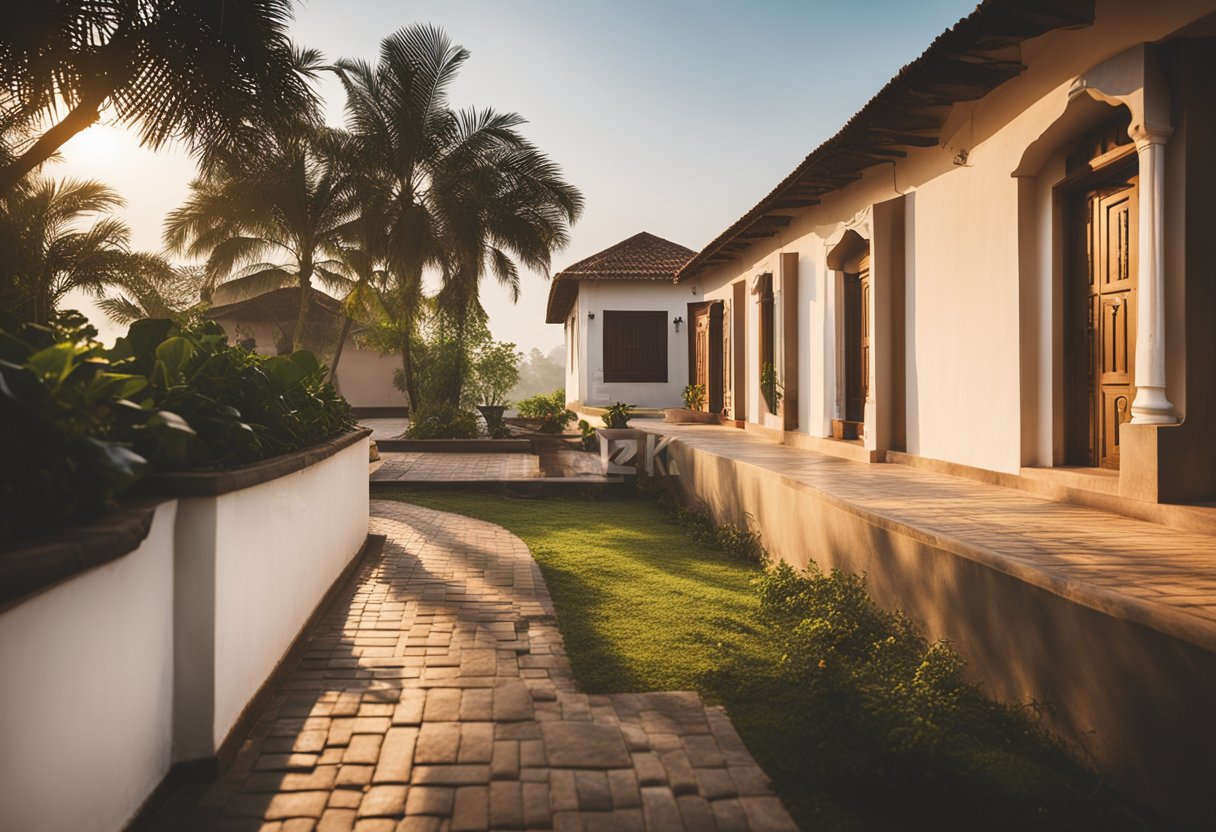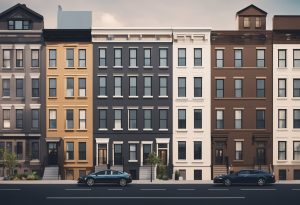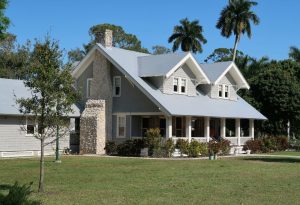Determining the best direction for a house to face in India is a crucial factor in Vastu Shastra, the traditional Indian system of architecture. The direction a house faces can impact the flow of energy and influence the well-being of the occupants. As per Vastu Shastra, the direction of the main entrance and the placement of various rooms in a house should be carefully considered to ensure a harmonious living environment.
According to Vastu Shastra, the north, northeast, west, and east are the best directions for a house to face in India. Each direction has its unique set of benefits, and the choice ultimately depends on the location and surroundings of the house. The north is considered ideal for business-related activities, while the east is believed to promote good health and spiritual growth. The west is associated with prosperity, and the northeast is considered the most auspicious direction for the main entrance.
Sun and Wind: Climate Factors to Consider
Sun Path: The orientation of a house in India should take into consideration the path of the sun. In general, a house should be designed to maximize sunlight during the winter months and minimize it during the summer months. This can be achieved by orienting the house towards the south in the Northern Hemisphere and towards the north in the Southern Hemisphere.
However, in India, the sun path varies depending on the location. For example, in Noida and Delhi NCR, the sun rises in the east-northeast and sets in the west-northwest, while in Chennai, the sun rises in the east-southeast and sets in the west-southwest. Therefore, the orientation of the house should be designed to take into account the specific location and the path of the sun.
Wind Patterns: The orientation of a house in India should also take into consideration the prevailing wind patterns. This can help to maximize natural ventilation and reduce the need for mechanical cooling. In general, a house should be designed to capture the prevailing winds and direct them into the living spaces.
For example, in coastal areas, the prevailing winds are from the sea and blow towards the land during the day and from the land towards the sea at night. Therefore, the house should be designed to capture these winds and direct them into the living spaces during the day and out of the living spaces at night.
In summary, when designing the orientation of a house in India, it is important to consider the sun path and prevailing wind patterns to maximize natural light and ventilation and reduce the need for mechanical cooling.
Related Posts:
The Cultural Importance of Vastu Shastra for House Entrance
In India, Vastu Shastra is a traditional system of architecture that is believed to bring harmony and balance to a home. According to Vastu Shastra, the direction a house faces is of utmost importance. It is believed that if a house is constructed in the wrong direction, it can bring negative energy and bad luck to the occupants. Therefore, it is recommended to face a house in a direction that aligns with the principles of Vastu Shastra.
According to Vastu Shastra and Vastu for Home, the best directions for a house to face are north, northeast, west, or east. Each direction has its own significance and is believed to bring different energies to the house. For example, a north-facing house is believed to bring prosperity, while an east-facing house is believed to bring good health and happiness.
Functional Considerations: Maximizing Living Space and Outdoor Areas
Living Space Utilization: The direction a house faces can have a significant impact on the utilization of living space. According to Vastu Shastra, the ideal direction for the living room is north or east-facing. These directions allow for the maximum amount of natural light to enter the room, creating a bright and positive atmosphere. Additionally, a north-facing living room can help keep the space cool during the summer months, while an east-facing living room can provide warmth and light in the morning.
On the other hand, a south-facing living room may receive too much direct sunlight, making the space too hot and uncomfortable. A west-facing living room may also become too hot in the afternoon and evening, making it difficult to spend time in the room.
Garden and Exterior: The direction a house faces can also affect the exterior of the property, including the garden. According to Vastu Shastra, the ideal direction for a garden is north or east-facing. These directions allow for the maximum amount of sunlight to enter the garden, providing the necessary light for plants to grow and thrive.
A south-facing garden may receive too much direct sunlight, causing plants to wither and die. A west-facing garden may also have issues with too much direct sunlight, as well as problems with strong winds in the evening.
In conclusion, when considering the best direction for a house to face in India, it is important to take into account the functional aspects of the property, including living space utilization and garden and exterior design. By following Vastu Shastra guidelines, homeowners can create a harmonious and balanced living space that promotes positive energy flow and overall well-being.
Financial Considerations: Energy Efficiency and Property Value
Energy Efficiency: The direction a house faces can greatly impact its energy efficiency and therefore, its economic value. For instance, a house facing south or west in India can get more direct sunlight, leading to higher temperatures and increased energy consumption for cooling. On the other hand, a house facing north or east can receive more indirect sunlight and remain cooler, leading to lower energy consumption.
Additionally, the placement of windows and doors can also impact energy efficiency. For example, a house facing east with large windows can allow for natural light to enter the house in the morning, reducing the need for artificial lighting and saving energy costs.
Resale Value: The direction a house faces can also impact its resale value. In India, houses facing north or east are considered more favorable as they are believed to attract positive energy according to Vastu Shastra. As a result, houses facing these directions are in higher demand, leading to potentially higher resale values.
However, it is important to note that other factors such as location, amenities, and condition of the house also play a significant role in determining its resale value. Therefore, while the direction a house faces can impact its economic value, it is not the only factor to consider.
Environmental Sustainability: Eco-Friendly Practices and Materials
Sustainability: When it comes to building a house in India, sustainability is an important factor to consider. The direction a house faces can have an impact on its energy efficiency and sustainability. For example, a house facing south in India can receive more direct sunlight, which can increase the need for air conditioning and cooling systems. On the other hand, a house facing north can receive less direct sunlight, which can reduce the need for cooling systems.
In addition to the direction, the materials used to build the house can also impact its sustainability. Using eco-friendly materials, such as bamboo, recycled plastic, and natural stone, can reduce the environmental impact of construction. These materials are renewable, biodegradable, and require less energy to produce compared to traditional building materials.
Eco-Friendly Materials: Choosing eco-friendly materials for construction can have a positive impact on the environment. One material that is gaining popularity in India is bamboo. Bamboo is a sustainable material that grows quickly and requires less energy to produce compared to traditional building materials. It is also durable, strong, and has a low carbon footprint.
Another eco-friendly material that is gaining popularity in India is recycled plastic. Recycled plastic can be used to make a variety of building materials, including roofing tiles, flooring, and insulation. Using recycled plastic in construction can help reduce the amount of plastic waste in landfills and oceans while also providing a durable and long-lasting building material.
Overall, choosing the best direction for a house to face in India and using eco-friendly materials can have a positive impact on the environment. By considering sustainability and using eco-friendly materials, homeowners can reduce their carbon footprint and contribute to a greener future.
Personal Taste: Aesthetic Appeal and Scenic Views
Aesthetic Appeal: When it comes to choosing the best direction for a house to face in India, personal preferences play a crucial role. One of the most important factors that homeowners consider is the aesthetic appeal of the house. The front elevation of the house is the first thing that people notice, and it can leave a lasting impression. Some people prefer a traditional look with a sloping roof and wooden windows, while others prefer a modern look with straight lines and large glass windows.
View and Scenery: Another personal preference that homeowners consider is the view and scenery from their house. If the house is facing a beautiful garden or a scenic view, it can add to the overall appeal of the house. Some homeowners prefer a house facing a park or a lake, while others prefer a house facing the mountains or the sea. It is important to note that the view and scenery can change over time, and it is essential to consider the long-term impact of the view and scenery when choosing the best direction for a house to face in India.
Overall, personal preferences play a significant role when it comes to choosing the best direction for a house to face in India. Homeowners should consider their aesthetic preferences and the view and scenery from their house when making this decision.
Legal Compliance: Building Codes and Zoning Regulations
Building Codes: In India, building codes are enforced by local governments and vary by state. The National Building Code of India (NBC) provides guidelines for building design and construction, and compliance with NBC is mandatory in some states. The NBC covers aspects such as building materials, fire safety, plumbing, and ventilation. Building codes are important to ensure the safety of occupants and the structural integrity of the building.
Zoning Laws: Zoning laws regulate land use and development in India. They are enforced by local governments and vary by state. Zoning laws divide land into different zones, such as residential, commercial, and industrial, and specify the type of development that is allowed in each zone. Zoning laws are important to ensure that development is appropriate for the area and does not negatively impact the surrounding community.
Compliance with building codes and zoning laws is important for legal and regulatory compliance in India. Failure to comply can result in fines, legal action, and even demolition of the building. It is important to consult with local authorities and obtain the necessary permits and approvals before starting any construction or development projects.
FAQs About Which direction is Good as per Vastu for House Entrance?
What are the Vastu principles for the orientation of a house entrance?
According to Vastu principles, the main entrance of a house should face east, north, or northeast direction. The entrance should be well-lit and spacious to allow positive energy to flow in. Additionally, the entrance should not face any obstructions or negative elements such as a cemetery or a wall.
How does sunlight impact the choice of house direction?
Sunlight plays a crucial role in the orientation of a house. A house facing east receives ample sunlight in the morning, which is considered beneficial for health and prosperity. On the other hand, a house facing west receives sunlight in the evening, which is considered inauspicious in Vastu principles.
What factors determine the best house facing for prosperity?
The direction of a house facing is determined by various factors such as the location of the plot, the surrounding environment, and the orientation of the entrance. In Vastu principles, the north direction is considered the direction of wealth and prosperity. Hence, a house facing north is considered auspicious for financial growth and stability.
How can one determine the most auspicious entrance direction for their home?
One can determine the most auspicious entrance direction for their home by using a compass. Stand at the entrance of the house facing outside and note the direction using a compass. The direction that is noted is the direction of the house facing. One can then refer to Vastu or Feng Shui principles to determine the most auspicious direction for the entrance.
Is there a preference between a North-facing and an East-facing house?
In Vastu principles, both north-facing and east-facing houses are considered auspicious. A north-facing house is believed to bring wealth and prosperity, while an east-facing house is believed to bring good health and happiness. The choice between the two directions ultimately depends on personal preference and specific needs.
What are the benefits of aligning your house according to Feng Shui principles?
Feng Shui principles emphasize the importance of harmony and balance in one’s living space. By aligning a house according to Feng Shui principles, one can create a positive and harmonious environment that promotes health, wealth, and happiness. Some benefits of aligning a house according to Feng Shui principles include improved relationships, better sleep, and increased productivity.




